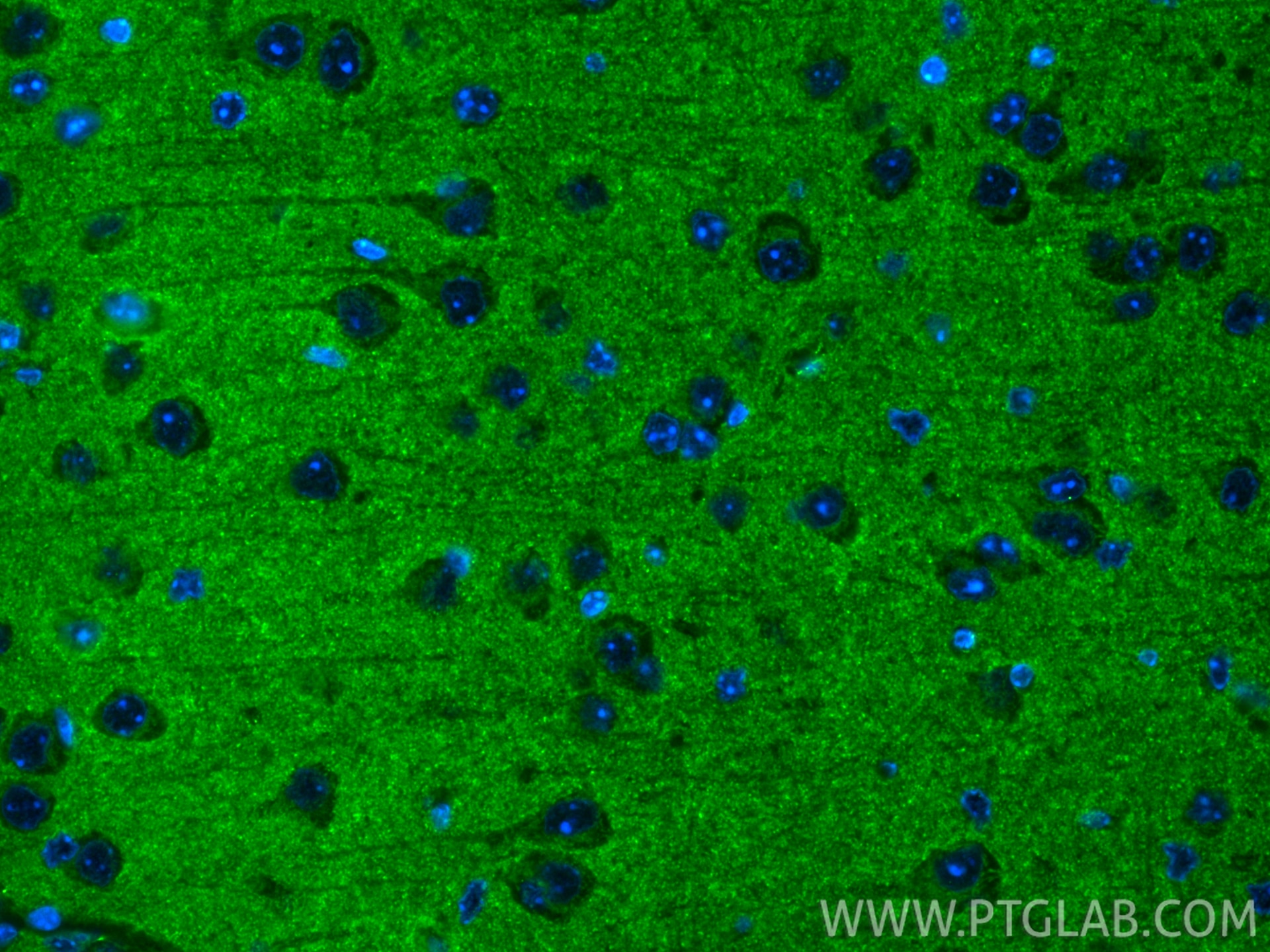Tested Applications
| Positive IF-P detected in | mouse brain tissue |
Recommended dilution
| Application | Dilution |
|---|---|
| Immunofluorescence (IF)-P | IF-P : 1:50-1:500 |
| It is recommended that this reagent should be titrated in each testing system to obtain optimal results. | |
| Sample-dependent, Check data in validation data gallery. | |
Product Information
CL488-84161-3 targets SYNGR1 in IF-P applications and shows reactivity with human, mouse, rat, pig samples.
| Tested Reactivity | human, mouse, rat, pig |
| Host / Isotype | Rabbit / IgG |
| Class | Recombinant |
| Type | Antibody |
| Immunogen |
CatNo: Ag0685 Product name: Recombinant human SYNGR1 protein Source: e coli.-derived, PGEX-4T Tag: GST Domain: 1-191 aa of BC000731 Sequence: MEGGAYGAGKAGGAFDPYTLVRQPHTILRVVSWLFSIVVFGSIVNEGYLNSASEGEEFCIYNRNPNACSYGVAVGVLAFLTCLLYLALDVYFPQISSVKDRKKAVLSDIGVSAFWAFLWFVGFCYLANQWQVSKPKDNPLNEGTDAARAAIAFSFFSIFTWSLTAALAVRRFKDLSFQEEYSTLFPASAQP Predict reactive species |
| Full Name | synaptogyrin 1 |
| Calculated Molecular Weight | 25 kDa |
| Observed Molecular Weight | 30 kDa |
| GenBank Accession Number | BC000731 |
| Gene Symbol | SYNGR1 |
| Gene ID (NCBI) | 9145 |
| Conjugate | CoraLite® Plus 488 Fluorescent Dye |
| Excitation/Emission Maxima Wavelengths | 493 nm / 522 nm |
| Form | Liquid |
| Purification Method | Protein A purification |
| UNIPROT ID | O43759 |
| Storage Buffer | PBS with 50% glycerol, 0.05% Proclin300, 0.5% BSA, pH 7.3. |
| Storage Conditions | Store at -20°C. Avoid exposure to light. Stable for one year after shipment. Aliquoting is unnecessary for -20oC storage. |
Background Information
Synaptogyrins are one of the most abundant vesicle components and are involved in the regulation of neurotransmitter release and synaptic plasticity. Synaptogyrins comprise a family of tyrosine-phosphorylated proteins with three isoforms: two neuronal forms (synaptogyrin-1 and -3) and one ubiquitous form (synaptogyrin-2). The synaptogyrin 1 (SYNGR1) can act as a regulator of Ca2+-dependent exocytosis. SYNGR1 protein mutations are associated with schizophrenia and are considered to be positional candidate genes for schizophrenia.(PMID: 10383386; 10595519; 14755516; 14732601; 17049558)




